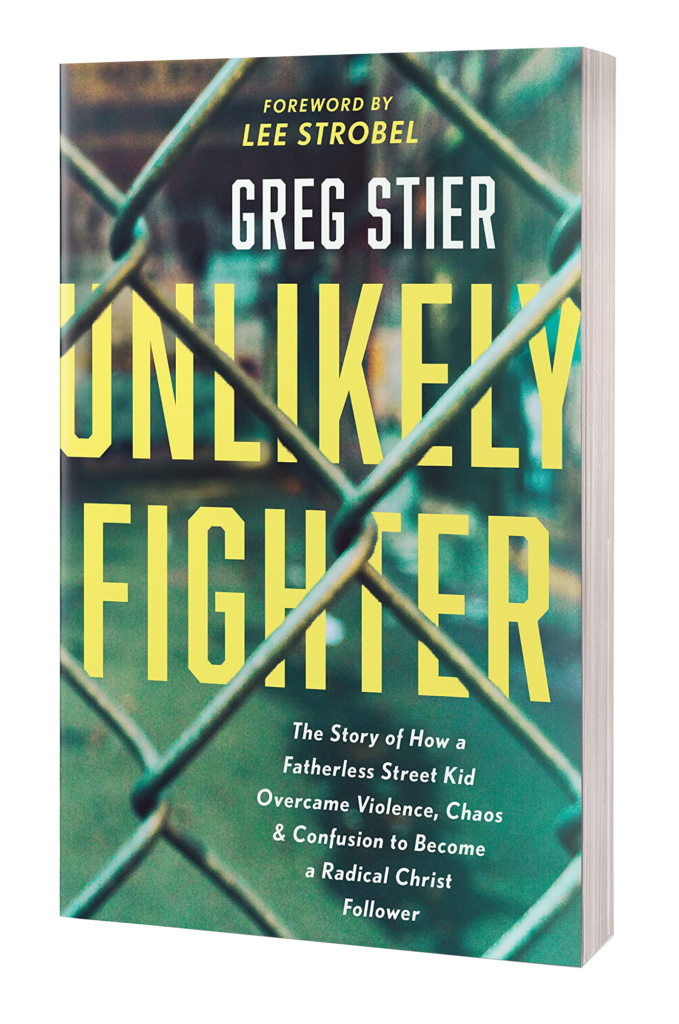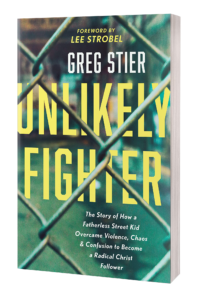For many, the story of Jesus’s crucifixion has become so familiar that it’s easy to brush over what He actually endured on the cross when He died in our place for our sins. We tend to under-estimate what He went through in the hours leading up to being crucified and during the six hours He hung on a cross in our stead.
My prayer for this article is that it will give you a taste of what it meant for Jesus to “taste death for everyone” Hebrews 2:9.
Suffering in Prayer
We’ll start in the Garden of Gethsemane, the night before His crucifixion. Underneath a black sky, Jesus prepared for His worst nightmare—feeling the wrath of God for the first time in all eternity. Again and again, He begged God for another way. In a sense, He was asking the Father to find a clause in the atonement contract.
Hebrews 5:7 gives us a sense of the intensity of His prayers:
He offered prayers and pleadings, with a loud cry and tears, to the one who could rescue Him from death.
In the garden, He wasn’t just praying—He was crying. He wasn’t just crying—He was weeping. He wasn’t just weeping—He was sweating. He wasn’t just sweating sweat—He was sweating blood.
The meticulously organized and detail-obsessed Dr. Luke described it this way:
And being in anguish, He prayed more fervently, and His sweat was like drops of blood, falling to the ground.
Luke 22:44
How is this even possible? How can a human sweat blood?
Before we dive into this, it’s helpful to remember that Jesus was 100% human and 100% God. As a human, He slept when He got tired, He drank when He got thirsty, He ate when He got hungry, and He bled when He got cut.
And in this passage, He bled, most likely because of a rare physiological phenomenon that can happen when someone is in so much stress and anguish their capillaries burst and they literally sweat blood. It’s called hematidrosis.
It’s also interesting that all of this took place in the Garden of Gethsemane, where an ancient grove of olive trees thrives. The word Gethsemane comes from the two Hebrew words that together mean oil press. The oil was produced when olives were crushed by a stone roller. From the crushing, came the life-giving oil of the olive.
In the same way, Jesus was about to be crushed on the cross, where the life-giving blood of the Lamb of God would flow from His hands, feet, and side. We see a foreshadowing of this in the blood He sweated out from His pores in the Garden of Gethsemane.
After three hours of sweating blood in prayer—as He repeatedly asked God to remove the cup of unfathomable suffering He was about to drink—He also repeatedly declared to the Father:
‘Yet not my will, but yours be done.’
Luke 22:42
Suffering in Trials
When Jesus heard the approaching soldiers—led by His frenemy Judas—He stood up, fully submitted to the Father’s will. According to author Philip Yancey, this submission made Him the calmest person in every scene that was to come.
As soon as He was arrested, all of His friends, the disciples, fled into the darkness. Have you ever felt abandoned by a friend? Jesus was abandoned by all of His.
The soldiers and guards marched Jesus into Jerusalem in the darkness. Over the next few hours, He endured six trials, three religious and three civil—and all illegal.
During those trials, He was mocked, slapped, and punched, over and over again. But Jesus never fought back. Although He could have called down lightning to destroy them all or dispatched an army of angels from Heaven to wipe them all out, He just took every punch, every slap, and every false accusation. Jesus was willing to do whatever it took.
Suffering in Torture
After Roman governor Pontius Pilate handed Jesus over to be crucified, the real brutality began.
Roman soldiers—experts at torture and death—stripped Jesus of His clothes and likely chained Him to a stone pillar. They beat Him again and again with a Roman flagrum, a whip that would have had anywhere from three to twelve strands of leather. Metal balls were woven into the leather, and at the end of each strand were pieces of broken pottery, glass, nails, bone, or twisted metal, designed to grab flesh and rip.
Imagine Jesus as He was beaten over and over and over and over again, huge pieces of skin and muscle being ripped and torn away with every blow. By the time the soldiers were done, His back and buttocks and legs would have been bloody, mangled ribbons of flesh and muscle and sinew.
This beating was nicknamed “the half death,” because half the men who received it died from it. But not Jesus. He had more to endure.
The soldiers put a purple robe on Him, twisted together a crown of thorns from the famous Jerusalem thorn bush—with thorns that were up to 3 inches long—and beat it into His skull with a rod, which they also used to batter His face. More than 700 years before Jesus was crucified, the prophet Isaiah prophesied that the Son of God would beaten so badly He wouldn’t even look human.
But many were amazed when they saw Him. His face was so disfigured He seemed hardly human, and from His appearance, one would scarcely know He was a man.
Isaiah 52:14
Now Jesus became an object of mockery. The Roman soldiers knelt before Him, laughingly calling out, “Hail, King of the Jews.” They slapped Him and spit on Him. Through it all, He remained silent.
Suffering in Crucifixion
Soon, they marched Him off to Golgotha, the hill of the skull, just outside Jerusalem. Here the Roman soldiers stripped Him of all His clothes, threw Him down on a wooden cross, stretched out His hands, took a spike nail, and hammered it into His right wrist.
Imagine the pain of each blow, as the hammer came down again and again, driving the nail deeper and deeper into His wrist, Why His wrists? Because the weight of His body, once lifted up on the cross, would tear His hands through the nail if it were put through His palm instead of His wrist. Only the spot where the two bones of the wrist come together could support the full weight of a man hung by a spike nail. In Jewish culture, wrists were considered a part of the hands.
Next, the soldiers crossed His feet and drove a spike nail through them. I can’t even fathom the pain.
The soldiers then lifted the cross up and dropped it into a previously dug hole. It was probably at this point that, according to Psalm 22:14, all of His bones came out of joint.
And that’s when the slow suffering began. There He was for all the world to see—naked and bleeding and dying, before the eyes of the very ones He’d created. To add insult to His many injuries, the thieves being crucified next to Him began to mock Him, as did the religious leaders and the crowds who had gathered.
To breathe on the cross is no small thing. Jesus had to push His body up to exhale and come down to inhale, scraping His open, bloody back against the rough-hewn wood of the cross for hours. The pain would have been excruciating.
Suffering in Abandonment
Finally, after six hours of tortured breathing, the end was near. Jesus looked up to Heaven and said, “Eloi! Eloi! Lama sabachthani” which means, “My God! My God! Why have you forsaken me?” (Mark 15:34). Because in that moment, Jesus was enduring the ultimate agony. In that moment, there was a tremor in the Trinity, as God the Father turned His back on His only Son and poured out His wrath—His anger for all of the sin of humanity—on Jesus.
Then Jesus yelled out the three words that would change the course of history—“It is finished”—and He bowed His bloodied head and died.
The sin of humanity had been paid in full by the blood of the Lamb of God, “who takes away the sin of the world” (John 1:29).
Why Did He Do It?
Why did Jesus do this? Hebrews 12:2 gives us the answer:
For the joy set before Him, He endured the cross, scorning its shame, and sat down at the right hand of the throne of God.
He endured all of this because of “the joy set before Him.” What was the joy set before Him? I believe it was two-fold:
1. Pleasing the Father.
He knew His sacrifice would be pleasing to the Father, and that brought Him great joy (John 6:38).
2. Saving you and me.
We were the joy set before Him. If He chose us and loved us before the creation of the world (Ephesians 1:4-5), you can be sure He had you and me in mind, along with all of the other believers throughout time, as He hung on the cross. And that brought Him joy in the midst of the agony.
Maybe you don’t feel loved. Whether you feel it or not, you are loved with an everlasting love. Jesus proved it on the cross.
Maybe it seems no one understands your suffering. But Jesus knows it. He drank the full cup of God’s wrath as He suffered the ultimate agony on the cross.
Maybe you don’t feel you have hope. But Jesus offers you ultimate hope. Because three days after He was crucified and buried, He was raised from the dead (1 Corinthians 15:3-4). He will raise you from the dead, both spiritually and, someday, physically, if you simply put your faith in Him.
The bill for your sin has been paid in full (“It is finished!”). You must simply receive it by faith. Trust in Jesus right now, because He went through the ultimate suffering to pay the price for your sin on the cross. When you do, you receive eternal life that starts now and lasts forever!
If you’ve already put your faith in Jesus, then share this post with someone else and pray for them to trust in Christ for salvation and the eternal life He offers.
Youth leaders: Download Walk to the Cross, a free, video-based curriculum that takes students through all Jesus endured for their sake (see excerpt below).






